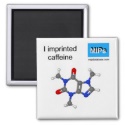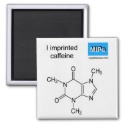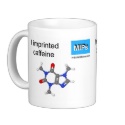|
|
Reference type: Journal
Authors: Belmont AS, Jaeger S, Knopp D, Niessner R, Gauglitz G, Haupt K
Article Title: Molecularly imprinted polymer films for reflectometric interference spectroscopic sensors.
Publication date: 2007
Journal: Biosensors and Bioelectronics
Volume: 22
Issue: (12)
Page numbers: 3267-3272.
DOI: 10.1016/j.bios.2007.01.023
Alternative URL: http://www.sciencedirect.com/science/article/B6TFC-4N1JRNB-1/2/cba3ffe429398d33ebd7c263ae9707ae
Abstract: Reflectometric interference spectroscopic measurements were performed on molecularly imprinted polymer (MIP) films with the herbicide atrazine as the template molecule. A conventional imprinting protocol was used relying on non-covalent interactions between the functional monomers and the template. The MIPs were deposited on glass transducers by two different methods: spin-coating followed by in situ polymerization of thin films of monomers containing a sacrificial polymeric porogen, and autoassembly of MIP nanoparticles with the aid of an associative linear polymer. Reproducible results were obtained upon measurements of atrazine solutions in toluene with both films. Atrazine concentrations as low as 1.7 ppm could be detected with the autoassembled particle film. No or very little analyte adsorption was observed onto non-imprinted control films made by spin-coating and by particle assembly, respectively. We believe that these MIP layers in combination with the general reflectrometric transduction scheme could be a versatile sensing tool for the detection of environmentally important and other analytes
Template and target information: atrazine
Author keywords: synthetic receptor, chemical sensor, molecularly imprinted polymer, Reflectometric interference spectroscopy, thin film
|


 I imprinted caffeine magnet ball and stick
I imprinted caffeine magnet ball and stick







 I imprinted caffeine magnet
I imprinted caffeine magnet







 caffeine template mug ball and stick
caffeine template mug ball and stick






